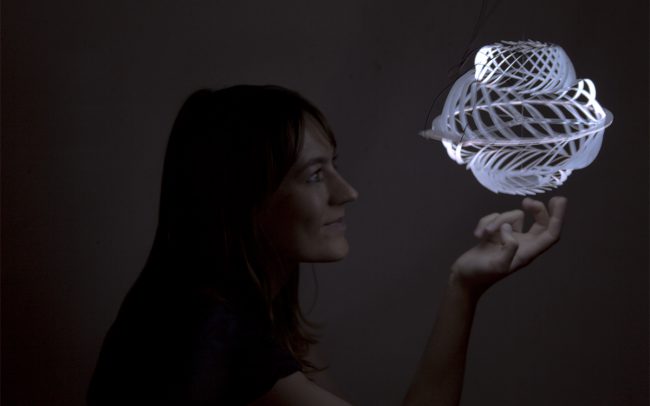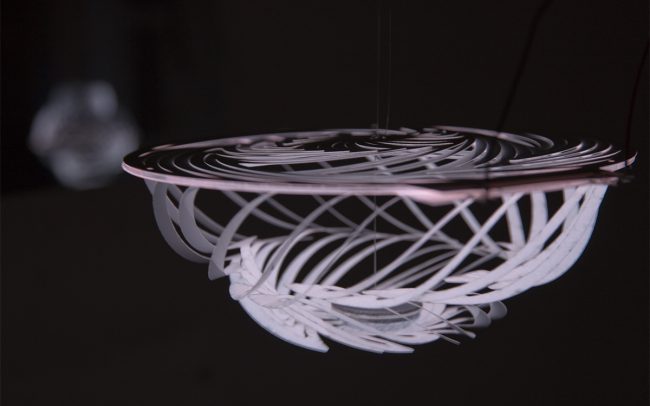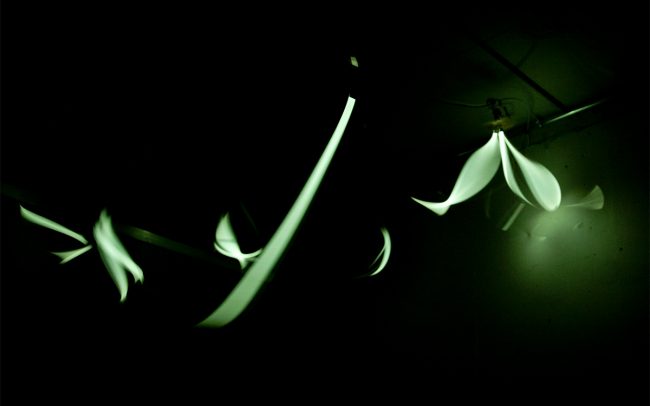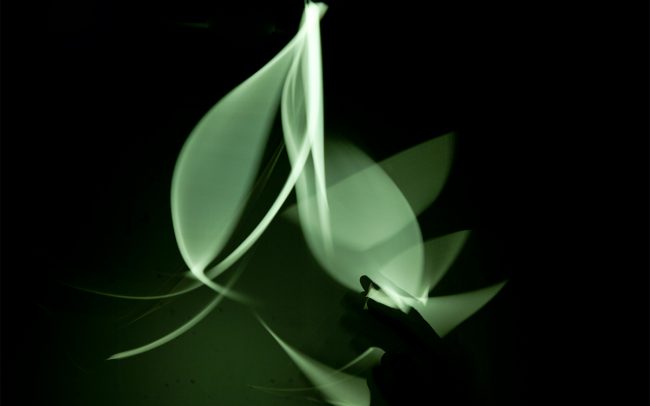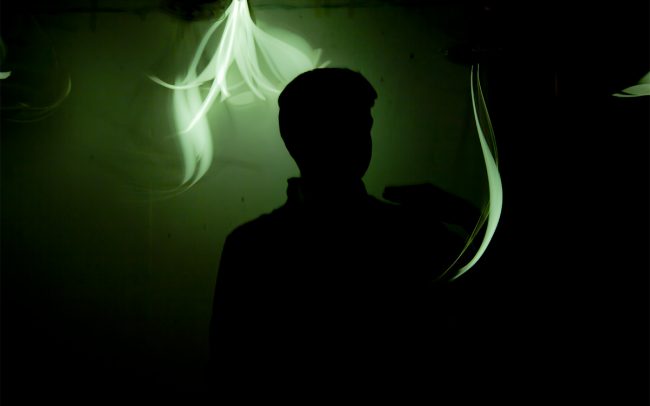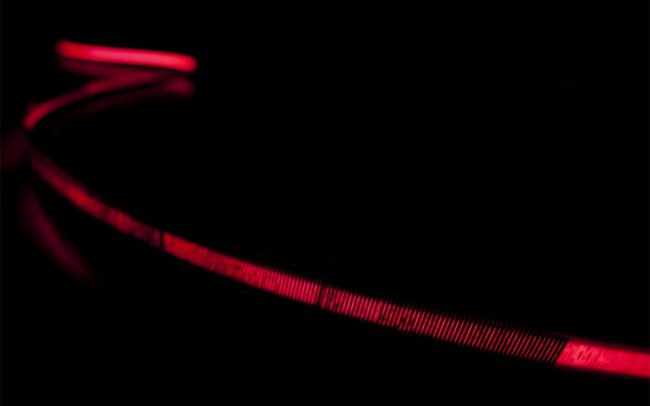a kinetic light installation, made from laser-cut electroluminescent foils
Material Animation is a kinetic light installation, made from laser-cut electroluminescent (EL) foils, which senses location, number and velocity of human occupants and responds through a multitude of wirelessly networked components to encourage further interaction. EL foils are extremely thin, flexible and lightweight screens, which emit a homogeneous cold light across their surface without the need for additional infrastructure.
The experiment was situated in three interconnected rooms, each reflecting a different theme and approach to physically animate the material in an architectural context.
‘Vapor’ creates a fluid space consisting of eight floating elements that are expanding and contracting in response to human interaction. Generative design processes helped to maximize the three-dimensional form, which was created through the way that two A4 sheets are cut and combined.
‘Open Wires’ aims to create an environment based on lighted, ephemeral and unpredictable three-dimensional shapes. The system consists of 31 EL strips that revolve and flicker in high speed. The visual impact was affected by both the revolving speed of the motors and the on/off state of the EL strips.
‘Insomnia’ focuses on the flexibility, thinness and consistent illumination of the material. These properties are used to back light two optical animations based on moiré patterns. The structure consists of an EL layer, printed black and white pictures and a striped pattern, which slides horizontally.
Each room was equipped with one Microsoft Kinect Camera, which senses the amount of people, their location, movement and speed, and if more than two people are in a room, also the area they occupy.
Every installation was linked to a computer, which communicates wirelessly with a remote server that was responsible for data distribution and choreographed performance of the spaces. After the information was compiled on the server individual data packages are sent back for further interpretation on the local PC. This exchange of data packages were used to organize the dynamic variation of elementary responses. Serial communication was used to send signals from the remote network to decentralized Arduino Microcontrollers which in turn control servo and DC motors to move the elements and transistor/ relay circuits to switch EL foils.



